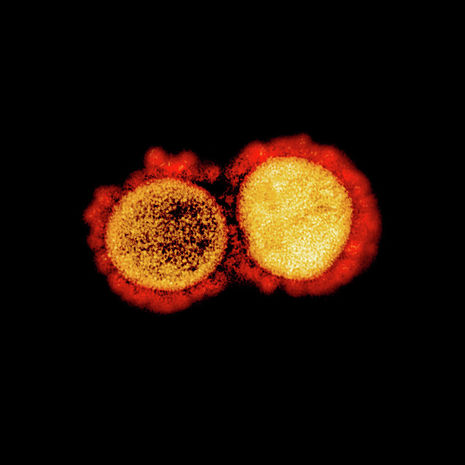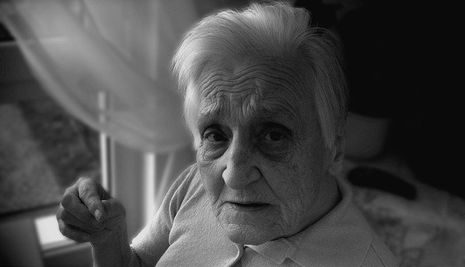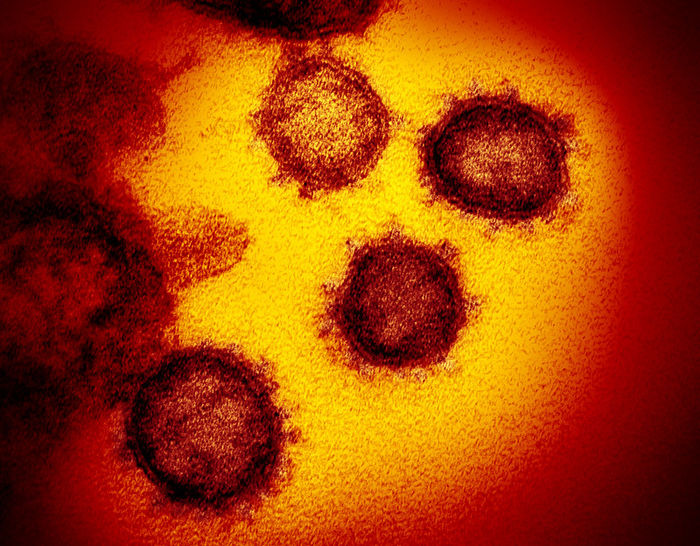This Week In COVID-19 Research: 6
Rory Cockshaw summarises this week of coronavirus research including recent consideration of the added health risks faced by people of non-white ethnicity and low socioeconomic status.

Not only is lockdown now being eased (ever so slightly), but the focus of national and international attention is now being drawn away from the pandemic and towards other social issues: most notably, racism. Recent information has come out in this report of increased mortality rates for people of BAME (Black, Asian & Minority Ethnic) communities; specifically, Black ethnic groups have mortality rates 2-3x that of White ethnic groups.
Furthermore, the government has come under criticism for omitting pages of a report regarding potential solutions to this problem, and another article indicates that BAME medical staff feel ‘let down’ by provisions for them. Research into coronavirus is therefore not only a medical matter but a social one, and here at Varsity Science it is our mission to distil and distribute this research to the general public.
Are we all in this together?
This paper, particularly relevant right now, criticises the idea that ‘we are all in this together’, citing the mortality and other health differentials between people of different socioeconomic status and ethnicity. The effects of socioeconomic status (SES) on health is well-documented: for instance, this paper titled (in part) “No Easy Solution”; and this paper that cites low income, low education and BAME backgrounds as factors worsening health outcomes.
“The assigned experts are disproportionately in charge of the lives of poor people”
This recent study on the first few weeks of lockdown in the UK showed that not only did there exist SES-stratified inequality, but that inequality did not diminish with time of lockdown. The root causes of this might be due to certain poorer areas having lower ability to socially distance, to stay away from work (if shifts are offered, for example), having overcrowded areas, underfunded facilities and being at higher risk for other conditions (perhaps due to poorer quality food or heavily polluted air).
‘Expert politics’ - who gets to decide our future?
The above ties into another paper published recently regarding the question of ’who gets to define the pandemic and dole out advice?’ It uses the example of the meatpacking industry in the US (slaughterhouses and related meat-producing factories and facilities) which are notorious for poor hygiene and exploitative working conditions, being staffed largely by underpaid immigrant workers. The corporations continued insisting that people come into work despite lockdown warnings, and after severe outbreaks amongst meatpacking workers, blamed the workers themselves for having brought the virus with them.
‘Expert politics’, say Iles and de Wit, is how we decide who is qualified enough to say when we are able to go back to work. The assigned experts are disproportionately in charge of the lives of poor people like the immigrant workers in meatpacking plants.
Dementia and coronavirus
Comorbidities are conditions that co-occur with primary conditions (in this case, coronavirus) which often increase the risk of patient mortality. A paper here shows the common comorbidities associated with COVID patients in Italy. Old age is also significantly associated with coronavirus risk, and a study from 9/6 breaks down the comorbidities associated with older COVID patients. Of these, dementia is a serious consideration; it was found that in patients aged >80 years, age was no longer a risk factor but instead severity of dementia was.

A study here (also from 9/6) describes not only the mortality risk for dementia patients but also the general trend of their symptoms over a 30-day period of lockdown. These are not dementia patients who are infected with COVID-19. These patients are asked to isolate from family and caregivers and to change their routines. New regulations regarding social distancing and shopping may be hard to remember, and the stress, lack of routine and interpersonal contact has a profoundly negative effect on their dementia-related symptoms.
COVID effects on non-COVID patients
Hospitals are currently, not unexpectedly, under immense stress. Due to the most severe COVID cases being admitted to hospitals, many are understandably anxious to present themselves for routine procedures or check-ups of non-COVID ailments. A paper here from 8/6 (CN: graphic images of necrosis) details a case of delayed surgery on a necrotic abscess due to fear of coronavirus in hospitals.
“4.5 billion people have been locked away in total... a global ecological experiment regarding the environmental impacts of humans.”
Furthermore, it discusses the effects of general abstention from hospitals. In March, Italy saw ~80% fewer emergency paediatric cases despite it being unlikely that there was an equal drop in severe injuries of children. This is despite the fact that recent reporting indicates school age children are at more significant risk from death by lightning than coronavirus. Similar patterns were seen in the SARS crisis in Taiwan around 2004 when 64% of cancer patients were afraid of the hospital and 36% were more worried about SARS than their own cancer. The authors of the paper recommend against delaying any surgical procedures as avoiding a hospital is very often worse than visiting it.
Animal coronavirus vaccines - what can we learn?
Recently at Varsity Science we have published a significant amount on vaccine science (such as here) as this is a vital part of combating any disease. While no human vaccine has yet been found for SARS-CoV-2, multiple vaccines exist for domesticated animals for various coronaviruses. We can predict some of the details of what a coronavirus vaccine might look like. For example, infectious bronchitis coronavirus in chickens mutates very rapidly and so new vaccinations are needed constantly. Further, inactivated vaccines typically don’t work for coronaviruses in animals, and the period of protective immunity is short. Whether these factors will apply to any vaccine in humans is unknown. Some upshots of animal vaccination detailed are that the vaccines are typically cheap and easy to apply to large populations. It should of course be stressed that no animal vaccine can simply be hoisted out and used on humans - the details of our immunobiology are too different, and there is no SARS-CoV-2 vaccine for animals yet anyway.
Global Human Confinement Experiment
Coronavirus lockdown and the environment are often discussed in tandem, including here at Varsity Science. 4.5 billion people have been locked away in total, with a peak on 4th April, according to this paper, giving the ideal setting for a global ecological experiment regarding the environmental impacts of humans. Global carbon dioxide emissions have dropped by 17%; fewer animals are killed by ships and vehicles; and lower noise and movement levels in cities have resulted in more animals returning to harbours and streets and other usually occupied locations. Conversely, certain areas of the world are seeing increases in chopping and burning deforestation.
More unexpected outcomes include the fact that pollution in China hasn’t dropped off despite drastic reduction in emissions. The sudden surge in PPE usage has also got serious consequences for our plastic footprint. Since national parks and other green areas have largely closed, a renewed interest has been taken by the public in green fields adjacent to urban centres. This hopefully could lead to investment in these areas for rewilding and conservation efforts. The public’s renewed interest in nature might be counteracting nature deficit disorder.
 Interviews / You don’t need to peak at Cambridge, says Robin Harding31 December 2025
Interviews / You don’t need to peak at Cambridge, says Robin Harding31 December 2025 News / Unions protest handling of redundancies at Epidemiology Unit30 December 2025
News / Unions protest handling of redundancies at Epidemiology Unit30 December 2025 Comment / What happened to men at Cambridge?31 December 2025
Comment / What happened to men at Cambridge?31 December 2025 Features / ‘Treated like we’re incompetent’: ents officers on college micromanagement30 December 2025
Features / ‘Treated like we’re incompetent’: ents officers on college micromanagement30 December 2025 Theatre / We should be filming ADC productions31 December 2025
Theatre / We should be filming ADC productions31 December 2025








